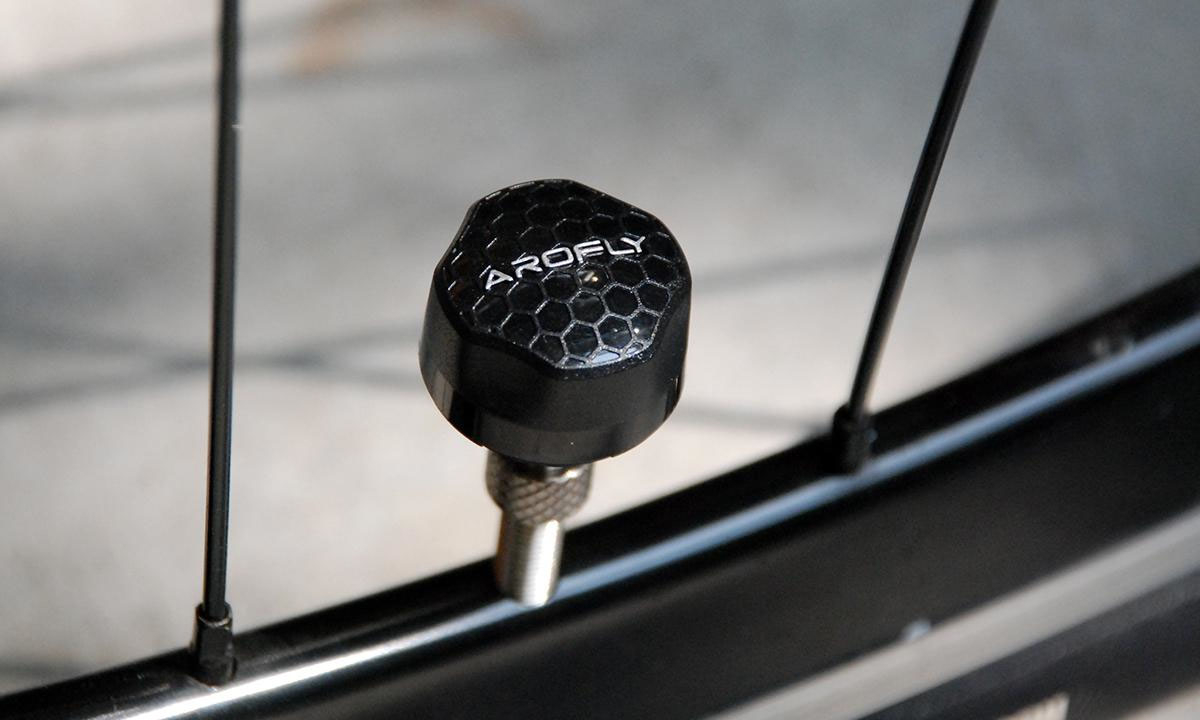
A Great Choice for Your Cycling Training Plan: The Latest Generation of AROFLY Power Meter
The newest LINK A1 series with deep practicality and great quality
Jul 03, 2020 18:00, by CYCLINGTIME.com
How time flies! It has been three years since AROFLY introduced their first power meter to the market in 2017. During these years, AROFLY’s development team continue to strive for greatness after the product launch, and has been actively developing the second‐generation power meter. What evolutionary changes the newest generation has? And what corrections have been made for data collection and analysis? Does it improve the accuracy? These questions that every cyclist is interested in are going to be answered in this article.
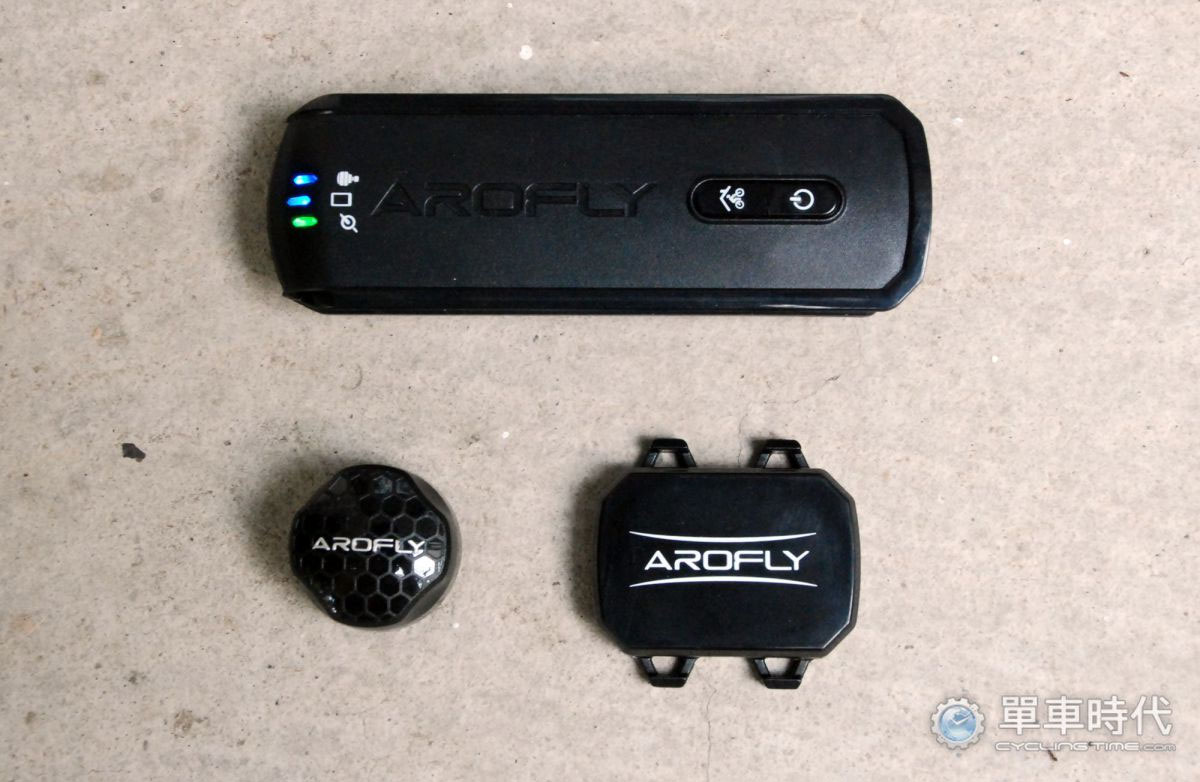
What evolutionary changes the newest generation has?
The Second‐generation AROFLY with even better quality
First, let’s discuss its first impression. The design of the first generation was quite simple. The bike meter made specifically for AROFLY had a very normal appearance, which was not that stylish for the cyclist.
As the second‐generation AROFLY, it can be seen that lots of modern elements have been added. The entire design fully keeps up on the latest trends, including the Power Meter attached on the valve stem that plays the leading role has become more fashionable as a breath of fresh air. Furthermore, the GPS Bike Computer exclusive for the AROFLY X‐ELITE series in high‐tech style with a streamlined look will certainly catch people’s attention.
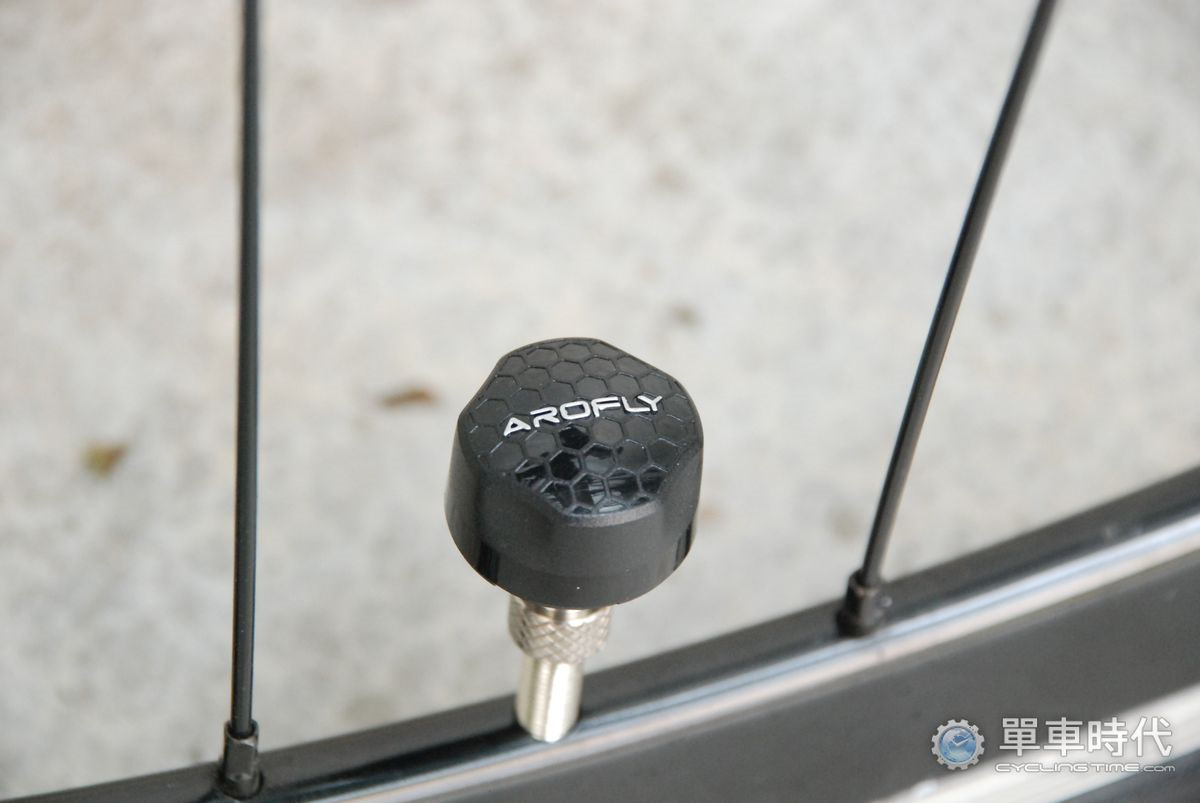
It can be seen that the second‐generation AROFLY has added lots of modern elements and the entire design keeps on the latest trends.
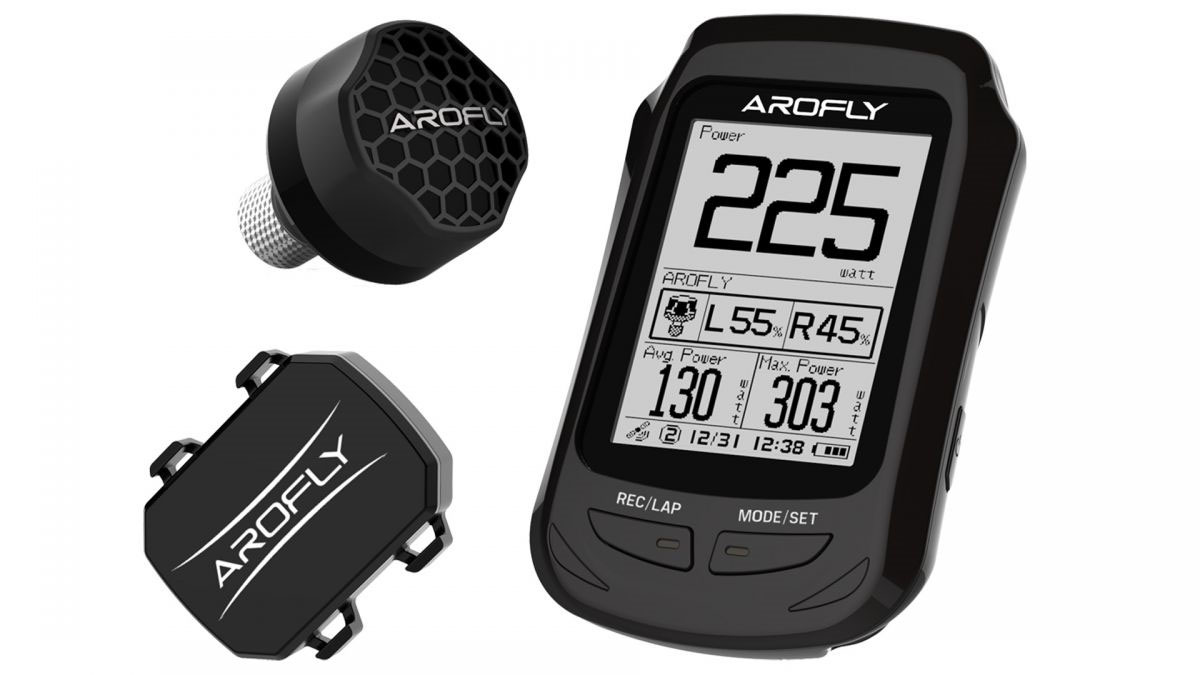
In the X‐ELITE series, the exclusive Bike Computer with elegant texture will attract curious attention from cyclists.
AROFLY does not only improve the Power Meter attached on the valve stem, but also added a Cadence Sensor installed on the crank to pursue more precise data. It can detect the cycling speed and power separately to improve the data accuracy.
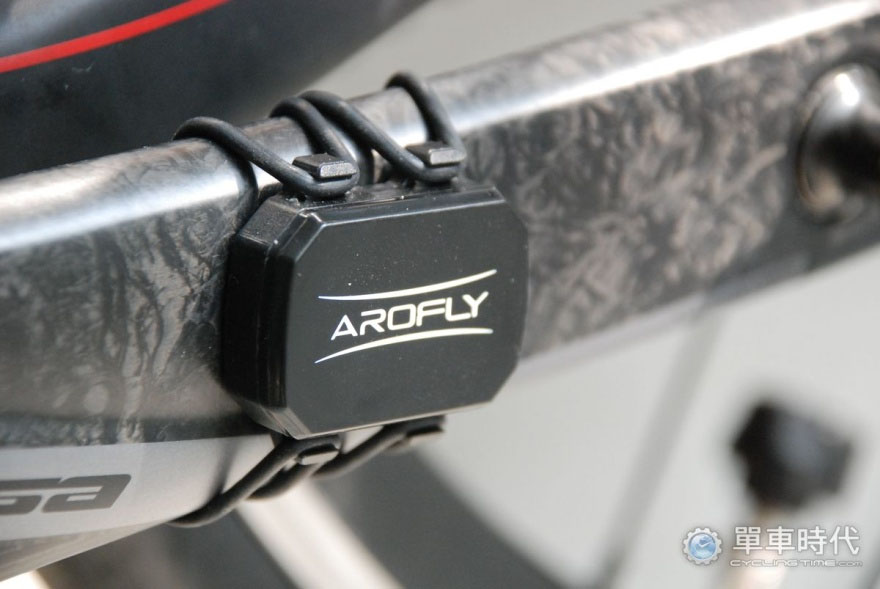
This time, AROFLY adds a Cadence Sensor installed on the crank to detect the cycling cadence and power separately for the improvement of data accuracy.
In addition to the brand new GPS Bike monitoring device, a LINK Transmitter is also available now that is compatible with most of the bike computers on the market. In the past, AROFLY Power Meter emitted its own signal only for its specific Bike Computer. The new generation of AROFLY provides a transmitter, LINK A1, allowing the AROFLY Power Meter and Cadence Sensor to receive the signal through it and then transmit the data to your GPS bike computer via ANT+ or Bluetooth. Extra expense is no longer required to purchase an exclusive bike computer. The new function of wind pressure sensor at the front end of LINK Transmitter is helpful to integrate a more accurate and reliable power data.
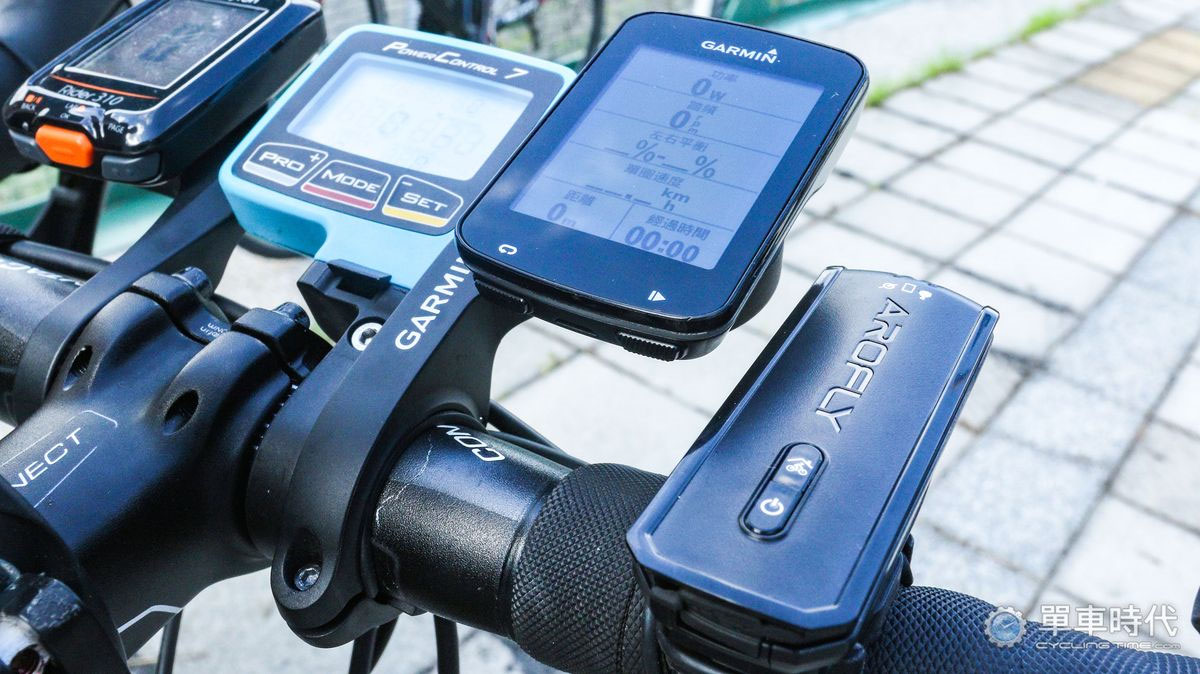
With wind pressure sensor, the LINK Transmitter of LINK A1 fixed on the handlebar or stem is able to sense and integrate the power detection.
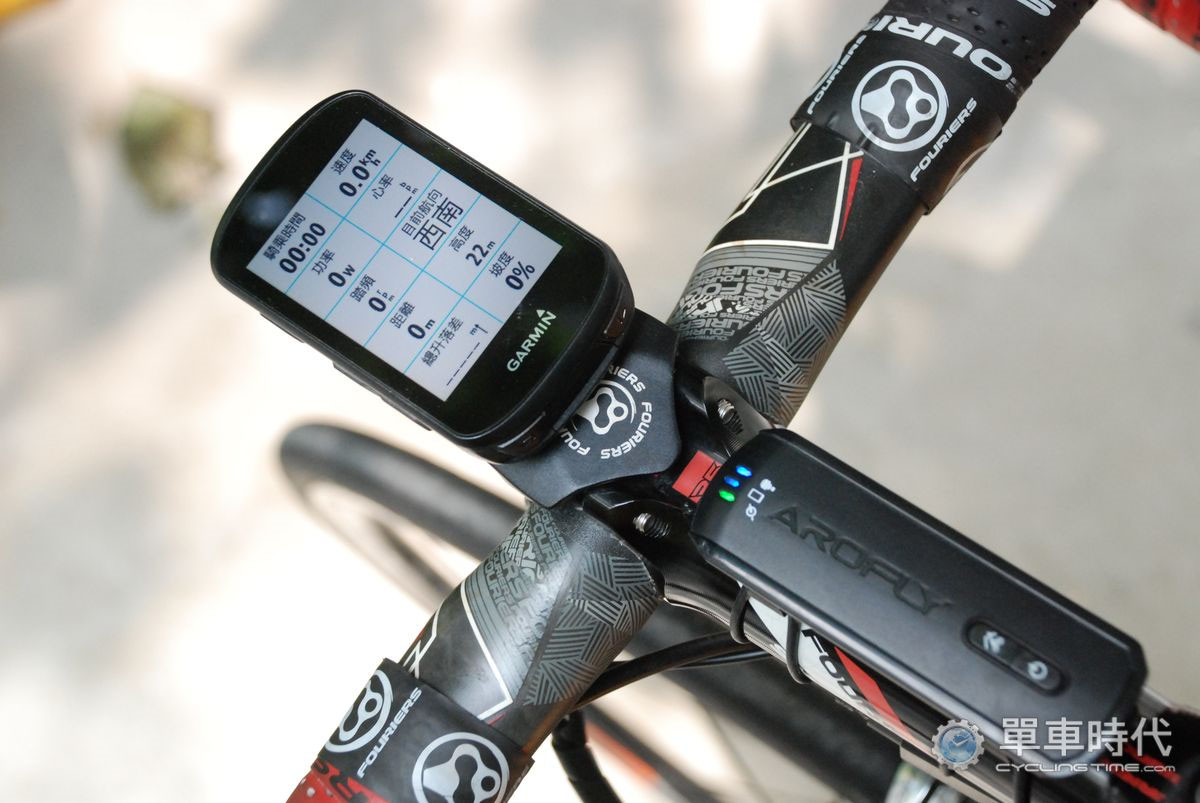
When using the LINK Transmitter of LINK A1, it is not a good idea to place any item in front of it, even keep a good distance away from it (as shown in the figure) is not recommended.
Since the change in tire pressure is closely related to the weight and its tire size, AROFLY configures the factors of cyclist weight, tire diameter and width as adjustable items, which can be directly set on the AROFLY Bike Computer. As for the use with LINK Transmitter of LINK A1, these parameters can be controlled by the “AROFLY” app.
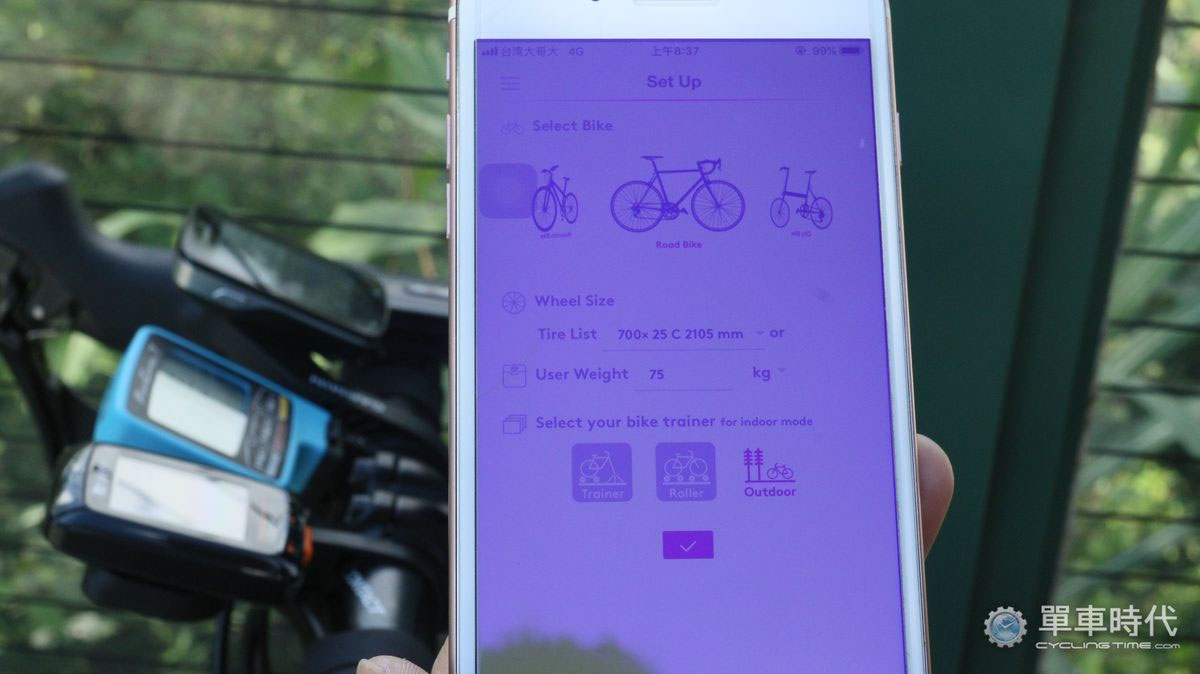
Setting the parameters by AROFLY app enables the indoor/outdoor cycling training plan to pursue more precise power data.
Precautions for the use with bike trainer (indoor cycling training)
It is very important to note that normally a power meter does not put in the consideration of indoor and outdoor biking. However, when using AROFLY, it is necessary to select the operation mode. Since the default setting is outdoor mode, there shall be no problem for riding outside. But if it is used for indoor training, please observe the following points:
1. Use rollers only for indoor training
Due to the design based on the detection of change in tire pressure, the use of other types of trainer stand such as fluid bike trainer will produce other variables, or the new smart or interactive trainer required to remove the rear wheel for mounting on the trainer is not suitable. All above should be easy for you to understand the reason to use on a roller‐type trainer.
Moreover, the previous generation of power meter could only use the most traditional rollers, but the latest generation is available to apply on the rollers with floating fork stand. It may be a big challenge for beginners to do roller riding. So, a floating fork stand can eliminate the need to balance.
2. Special setting to “Indoor Mode”
In addition to the roller‐type trainer, you also need to do the settings to the corresponding options. Once setting to indoor mode, then you have to choose for traditional rollers or floating fork trainer prior to enjoying the indoor riding.
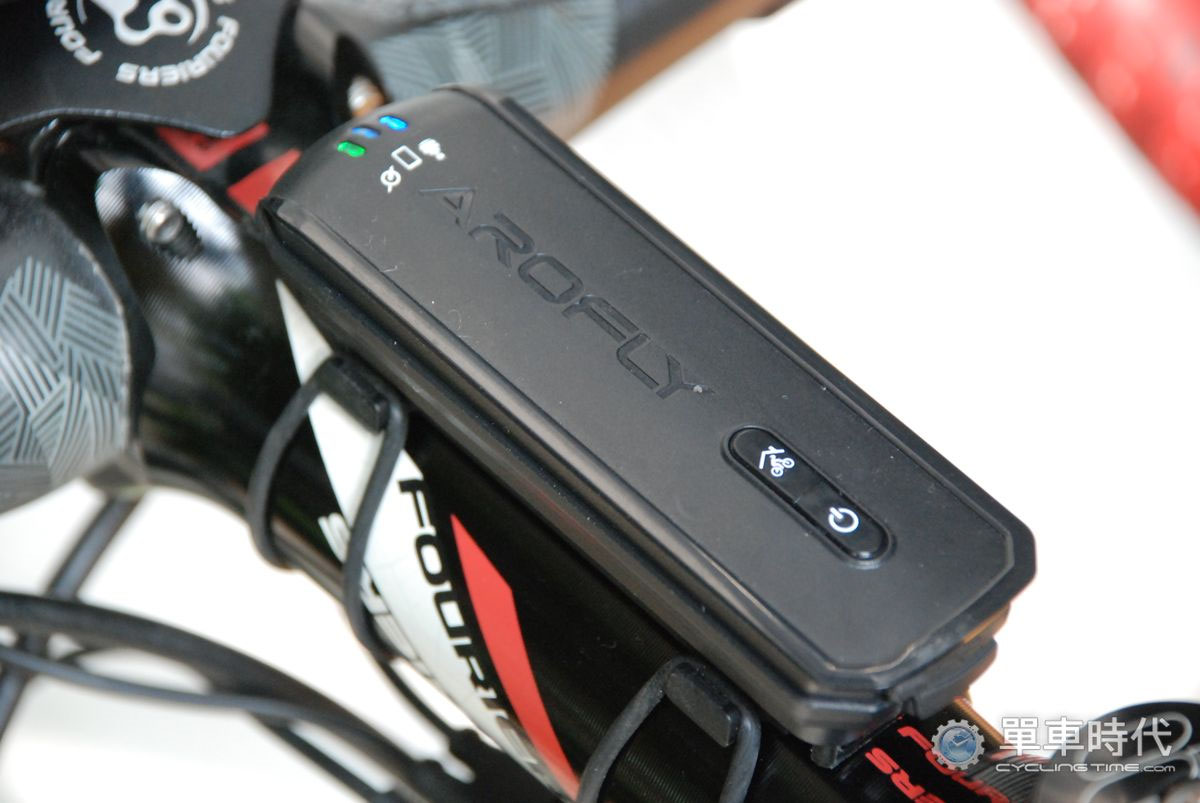
Before getting on the bike trainer, don’t forget to switch the operation method to “indoor mode”. As for LINK A1, the indoor mode above the power button should be activated.
Test Riding
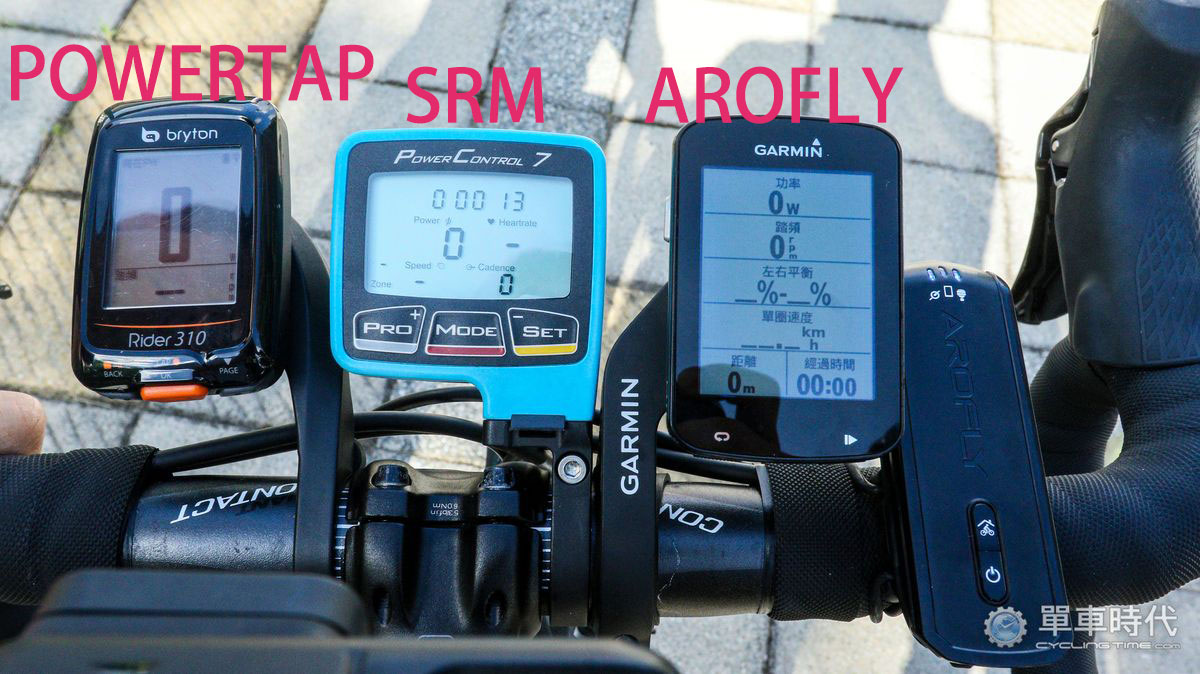
We used LINK A1 Power Meter to connect to GARMIN’s bike computer for outdoor riding, compared with SRM’s power meter set. And a control group (POWERTAP) was set up with Bryton’s bike computer.
Once AROFLY equipped on our bikes, we went to Zhongxinling in Taichung City, to do the test riding. We rode up hills with an average speed of 18 km/h and output of 160W. During the riding in this section, it was found that the power data of AROFLY and SRM were quite similar, and the difference was about 10W to 20W. In particularly from middle wattage (over 140W) to middle‐high wattage (over 200W), the data displayed on these three computers were very close, which showed that AROFLY’s technology and application were able to combine actual outdoor conditions with stable performance.
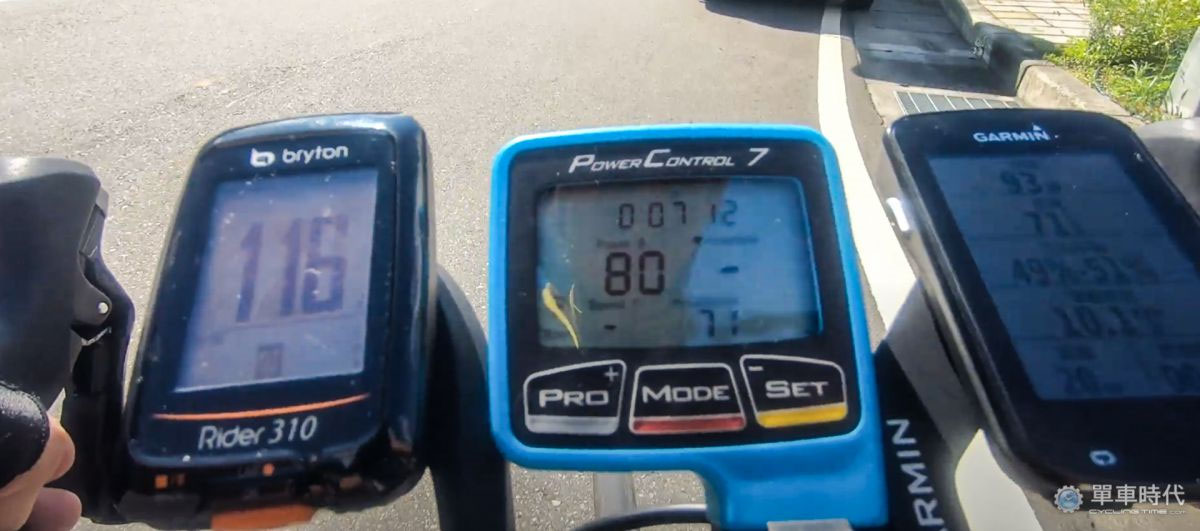
Data produced by these three power meter brands under low wattage (Figures of AROFLY and SRM were similar)
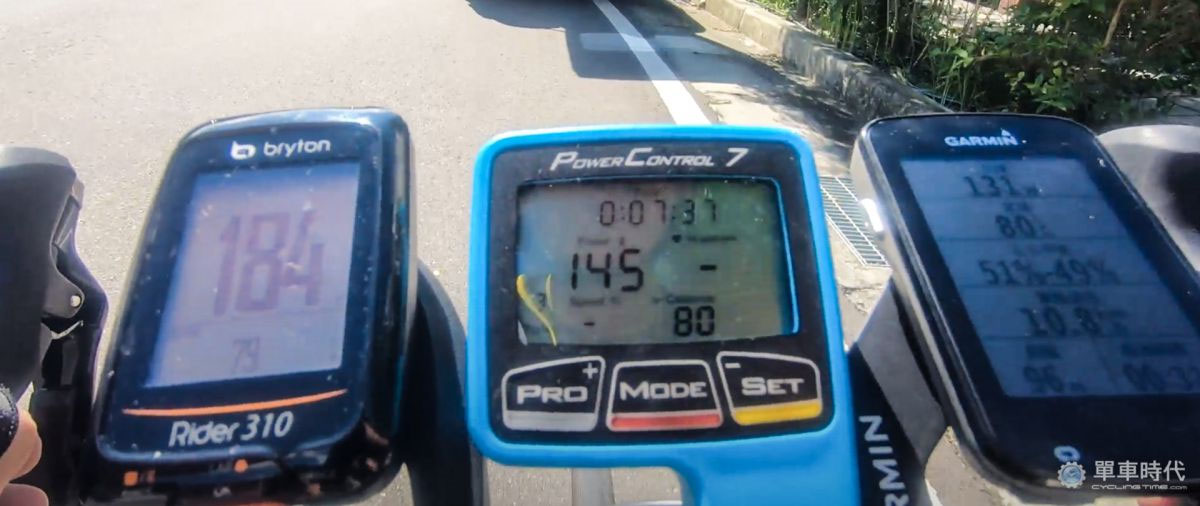
Data produced by these three power meter brands under middle wattage (Figures of AROFLY and SRM were similar)
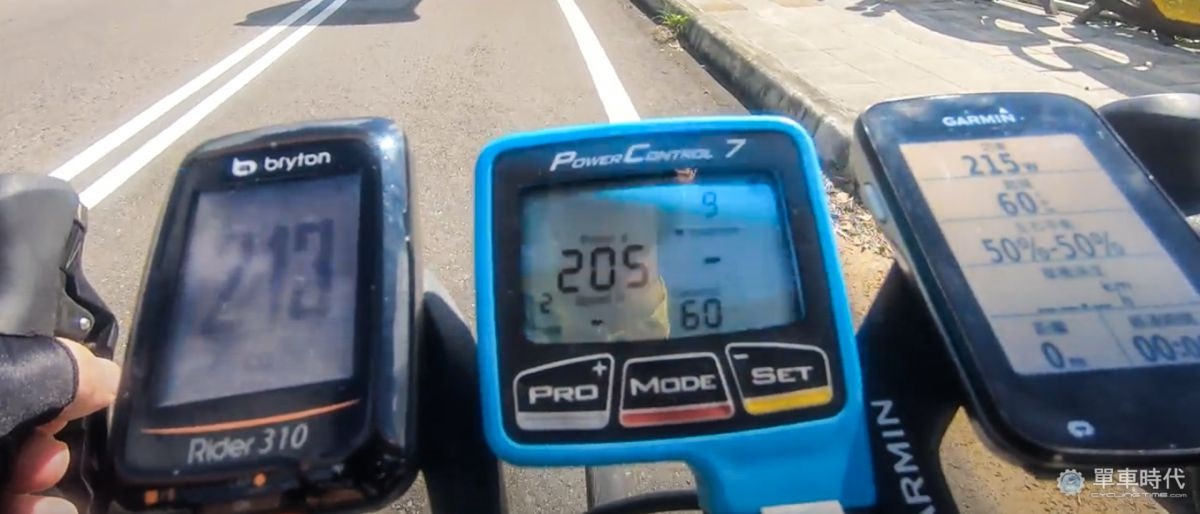
Data produced by these three power meter brands under middle‐high wattage (difference around 10W)
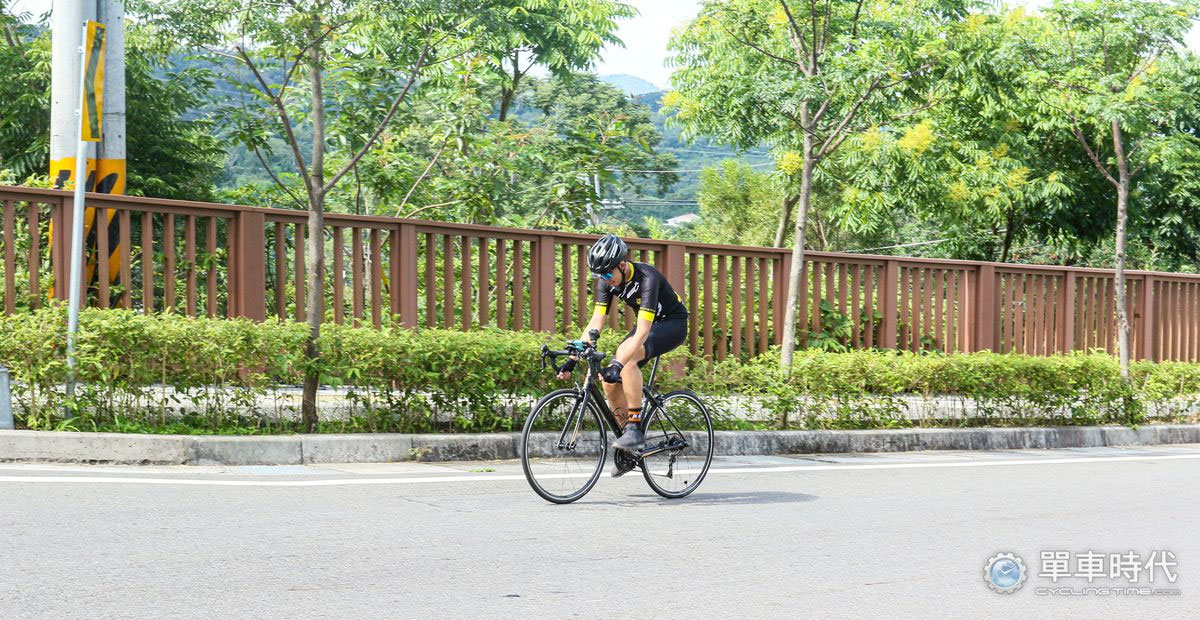
We chose Zhongxingling, the popular cycling route in Taichung, for our outdoor test riding, where has flat sections and gentle hills.
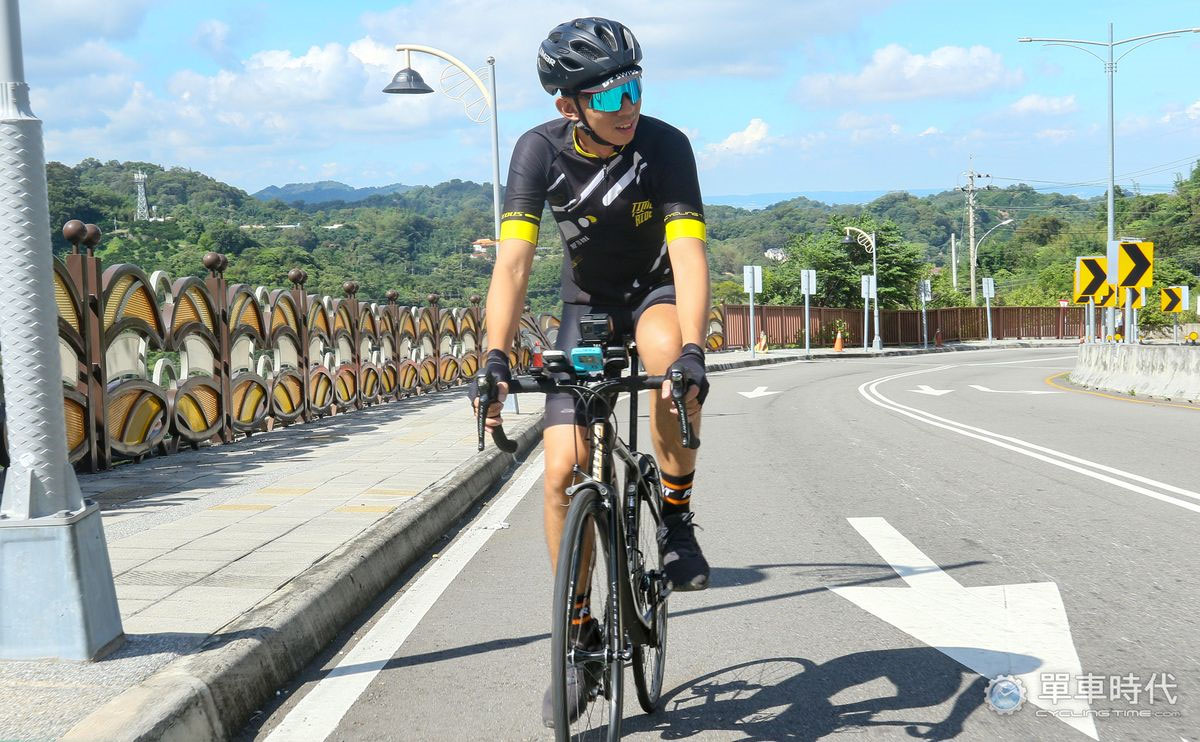
The purpose of test riding on this route was to prove the power data produced by AROFLY and compare the cross performance with other brands during the process from low to high wattage.
In terms of the accuracy and stability required by a power meter, the newest generation of AROFLY is quite extraordinary, but there is still room for improvement. In general, it is a practical product suitable for intermediate cyclists in digital training plan. The followings are our summary of AROFLY LINK A1 after the indoor and outdoor test riding.
First of all, the price of newest generation of AROFLY from US$279 (NT$8500) may be the most affordable set among all the power meters available on the market. The feature of simple installation (non‐complex process even it is used on different bicycles) can be considered a huge benefit.
In terms of amateur training and self‐improvement, the functions and data provided by AROFLY are quite complete. It is able to produce stable power figures with reference value, especially in the output interval of middle to high wattage (from 100W to 200W), which are similar to those bike computers of major brands (such as SRM and POWERTAP used in our test riding) on the market.
The data may fluctuate occasionally or stop for a short while during the riding, but it rarely occurs. In short, if you take the budget as the first consideration, and want to use power data to improve yourself and complete the exercise plan with regular cycling, the newest generation of AROFLY will be the most cost‐effective choice for you. Its high cost‐performance ratio with practical use indicates the creative abilities of Taiwanese brands.

